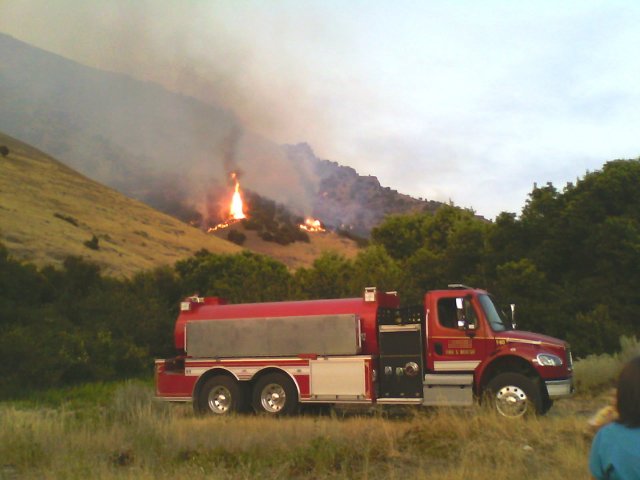
 6
6




Visit Redhawk's soil series: https://permies.com/wiki/redhawk-soil
How permies.com works: https://permies.com/wiki/34193/permies-works-links-threads
 11
11




 7
7




 4
4





 6
6




Some places need to be wild
 3
3














 4
4




Some places need to be wild
 6
6




Visit Redhawk's soil series: https://permies.com/wiki/redhawk-soil
How permies.com works: https://permies.com/wiki/34193/permies-works-links-threads
 8
8




 10
10




I also remember something about how mixed deciduous/coniferous forests had a much lower tendency to create really bad fires and attributed that fact to the deciduous trees. Jacke's "Edible Forest Gardens" has a section specifically about fire resistant plants, so it is certainly possible to help nature reduce the risk.FWIW, I recall Jack Cohen saying that deciduous trees are incapable of maintaining a crown fire, but I don't have a reference.
Visit Redhawk's soil series: https://permies.com/wiki/redhawk-soil
How permies.com works: https://permies.com/wiki/34193/permies-works-links-threads
 3
3




Combing the world for an appropriate signature.

 9
9






 3
3




Combing the world for an appropriate signature.
 3
3




 3
3




If there is one thing the Wizard of Oz has taught me, it is not to trust school teachers on bicycles.
 4
4




Rachel Findley wrote:Succulents? If you don't water them, succulents do get unhappy, but stay a bit moist. I have an unwatered aloe vera that lives on from year to year in summer-dry California. Ice plant naturalizes at Point Reyes, which is cooler and moister than the East Bay where I live, but gets no summer rain.
Combing the world for an appropriate signature.
 4
4




 5
5




I'm not familiar with your ecosystem, but have you considered mowing some fire-break "strips"? Leaving sufficient tall grass in blocks large enough for insects and birds? I have read of farmers on the Canadian Prairies planting a couple of combine widths of one crop, a couple more double widths of two other crops and then a double width of "bird seed" - things like sunflowers, some native plants etc. There has been a healthy increase in diversity, particularly of ground nesting birds. That's about all I can remember, but I suspect there would be more info on the web somewhere. Disturbed landscapes are often more productive than ones left completely alone, it's just trying and observing how much disturbance does the job. This is the same principle of mob grazing, although animals do it much better than machines from what I've read. But we don't have the massive herds of buffalo or elk to do it for us anymore in most regions. What would nature have been doing in your ecosystem 400 years ago with or without the help of Indigenous People?Jessie Kelsch wrote:My question builds on this one.... WHEN to mow the tall native grass for best critter (insect) comforts? West Texas, ~5400 feet, cane bluestem/ grama/ sideoats and their associates... Winter mowing has always been the idea-- to do it before the ground-nesting birds show up (night hawks,) but there's (happily) a lot of messaging circulating now about keeping the dead grasses over the winter for insect hidey-holes, and I want to keep the bug friends happy and healthy too. Is there some magic week just before birds arrive, but after insects are done using those grass stems.... Or, no magic week but rather too much overlap to mow at all?
We do have lots of trails through the grassy valley downward and westward from our house, so with a non-windy fire those are breaks... Maybe no mowing at all, for the above critter-need reasons?
Visit Redhawk's soil series: https://permies.com/wiki/redhawk-soil
How permies.com works: https://permies.com/wiki/34193/permies-works-links-threads
 6
6




Here's where I have some concerns about what I'm seeing, anecdotally, along the interstate near my home. The plants that were still flowering were mowed. I haven't gotten out there with a rule but it looks shorter than 5-7" and is brown and dry-looking.
Please bear with me as I explain.
The lawn area outside of my front door was digitally measured one recent afternoon. Where the grass was cut higher, it was 16' degrees cooler than where it was not healthy. And the nearby concrete sidewalk was 30' hotter than the healthy grass.
I'd like to offer the following link toward a two-fold reduction in heat island effect that makes 'civilized' areas hotter and hotter as development and populations grow, as well as the risks of wildfires that require emergency responses, etc. Succulents? https://debraleebaldwin.com/succulent-landscape/succulents-saved-day-says-wildfire-survivor/
--How are those hired to do the maintenance informed about which plants are undesirable? Is there a training, or visual reference tools?
Grateful for your courteous and conscientious public service..
"No scolding-- no rational demonstration of how to behave-- is going to inspire love." Alan Watts
"Love is in every thread of life, this I lean on." Elisa Andress
Volunteer with Dncinc.org
 5
5




Visit Redhawk's soil series: https://permies.com/wiki/redhawk-soil
How permies.com works: https://permies.com/wiki/34193/permies-works-links-threads

| I agree. Here's the link: http://stoves2.com |



